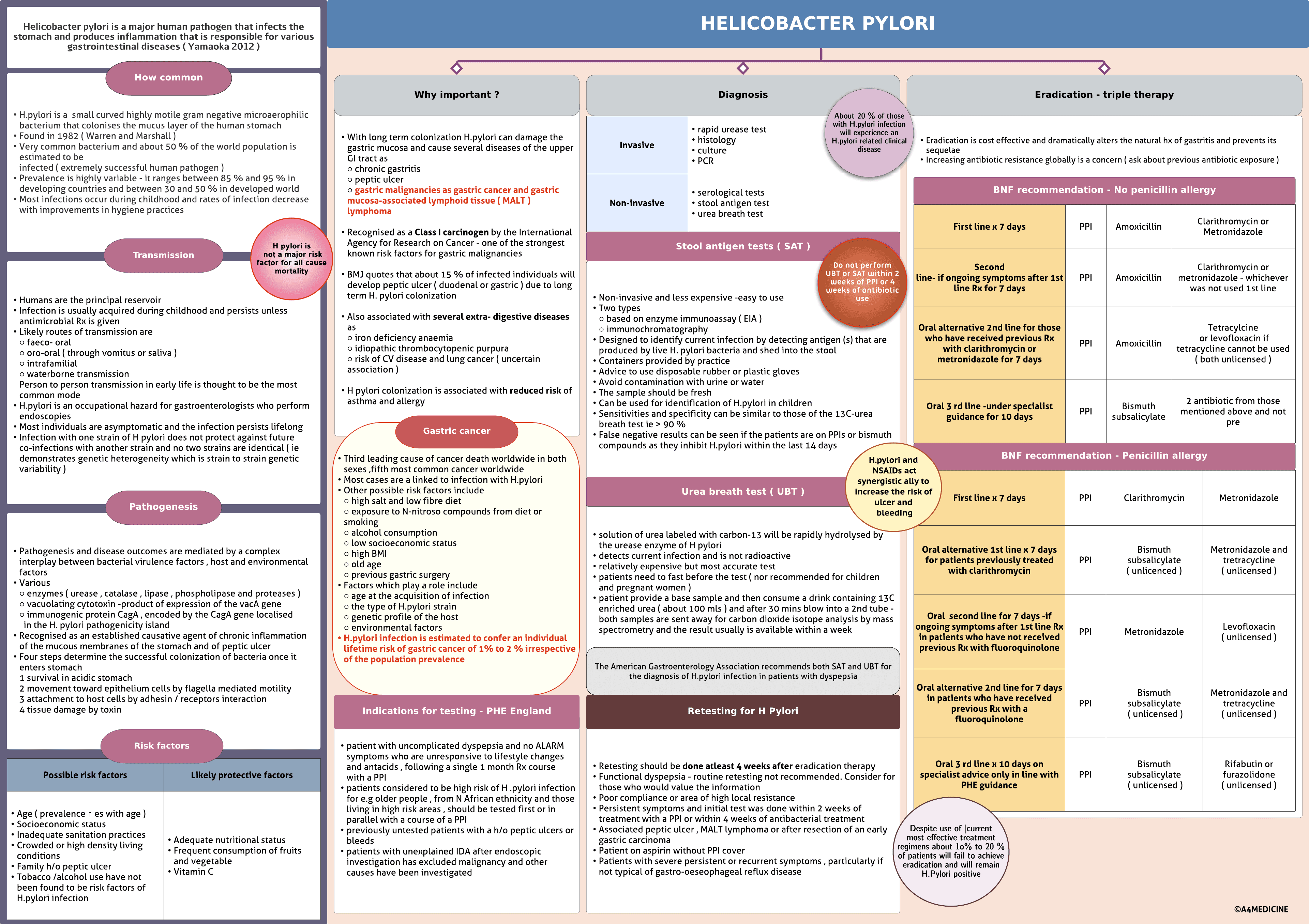Download A4Medicine Mobile App
Empower Your RCGP AKT Journey: Master the MCQs with Us!

Helicobacter pylori is a major human pathogen that infects the stomach and produces inflammation that is responsible for various gastrointestinal diseases ( Yamaoka 2012 )
How common-H.pylori is a small curved highly motile gram negative microaerophilic bacterium that colonises the mucus layer of the human stomach Found in 1982 ( Warren and Marshall ) Very common bacterium and about 50 % of the world population is estimated to beinfected ( extremely successful huma pathogen ) Prevalence is highly variable - it ranges between 85 % and 95 % in developing countries and between 30 and 50 % in developed world Most infections occur during childhood and rates of infection decrease with improvements in hygiene practices
Transmission -Humans are the principal reservoir Infection is usually acquired during childhood and persists unless antimicrobial Rx is given Likely routes of transmission are○ faeco- oral○ oro-oral ( through vomitus or saliva )○ intrafamilial○ waterborne transmissionPerson to person transmission in early life is thought to be the most common mode H.pylori is an occupational hazard for gastroenterologists who perform endoscopies Most individuals are asymptomatic and the infection persists lifelong Infection with one strain of H pylori does not protect against future co-infections with another strain...
Try our Free Plan to get the full article.